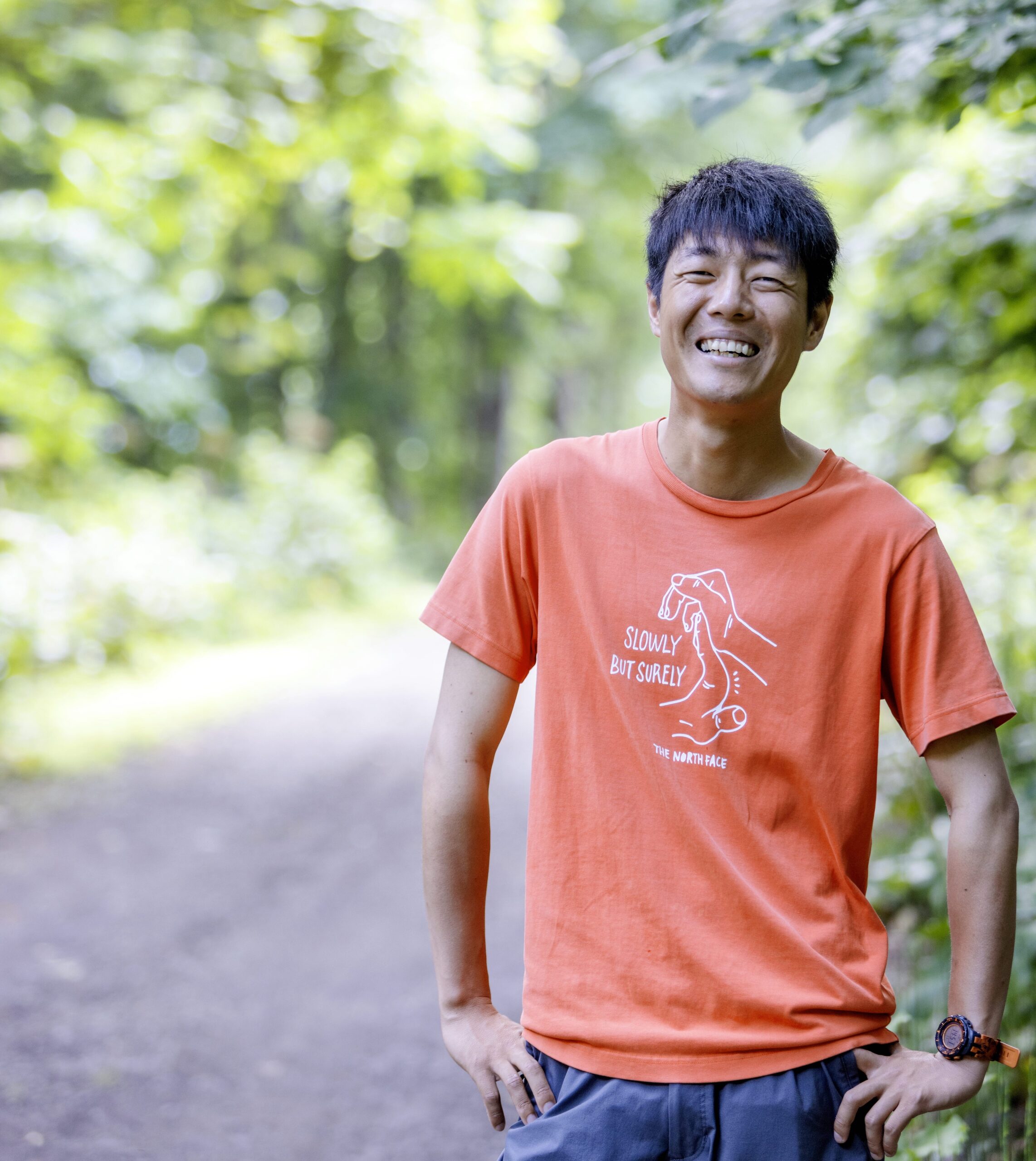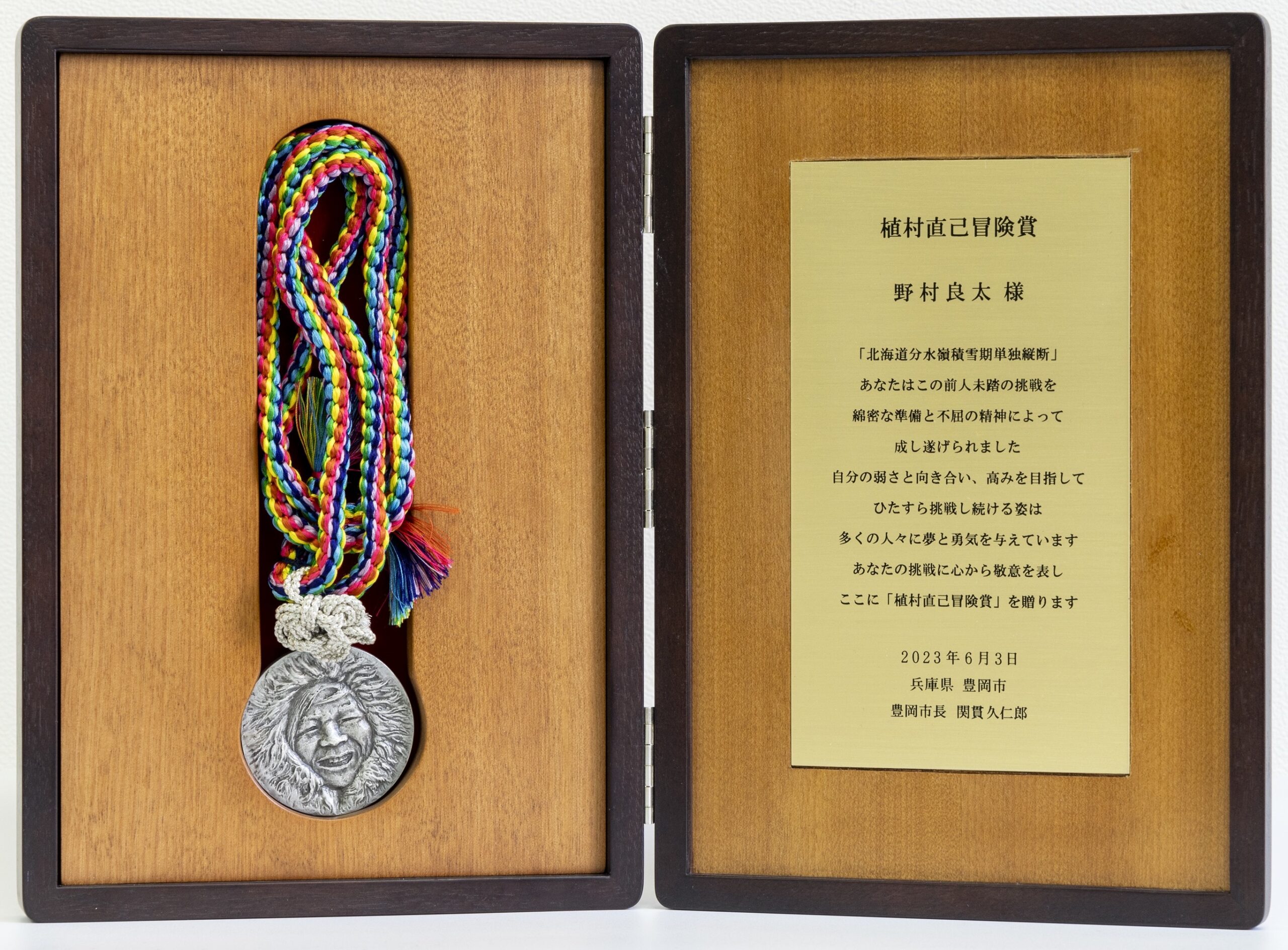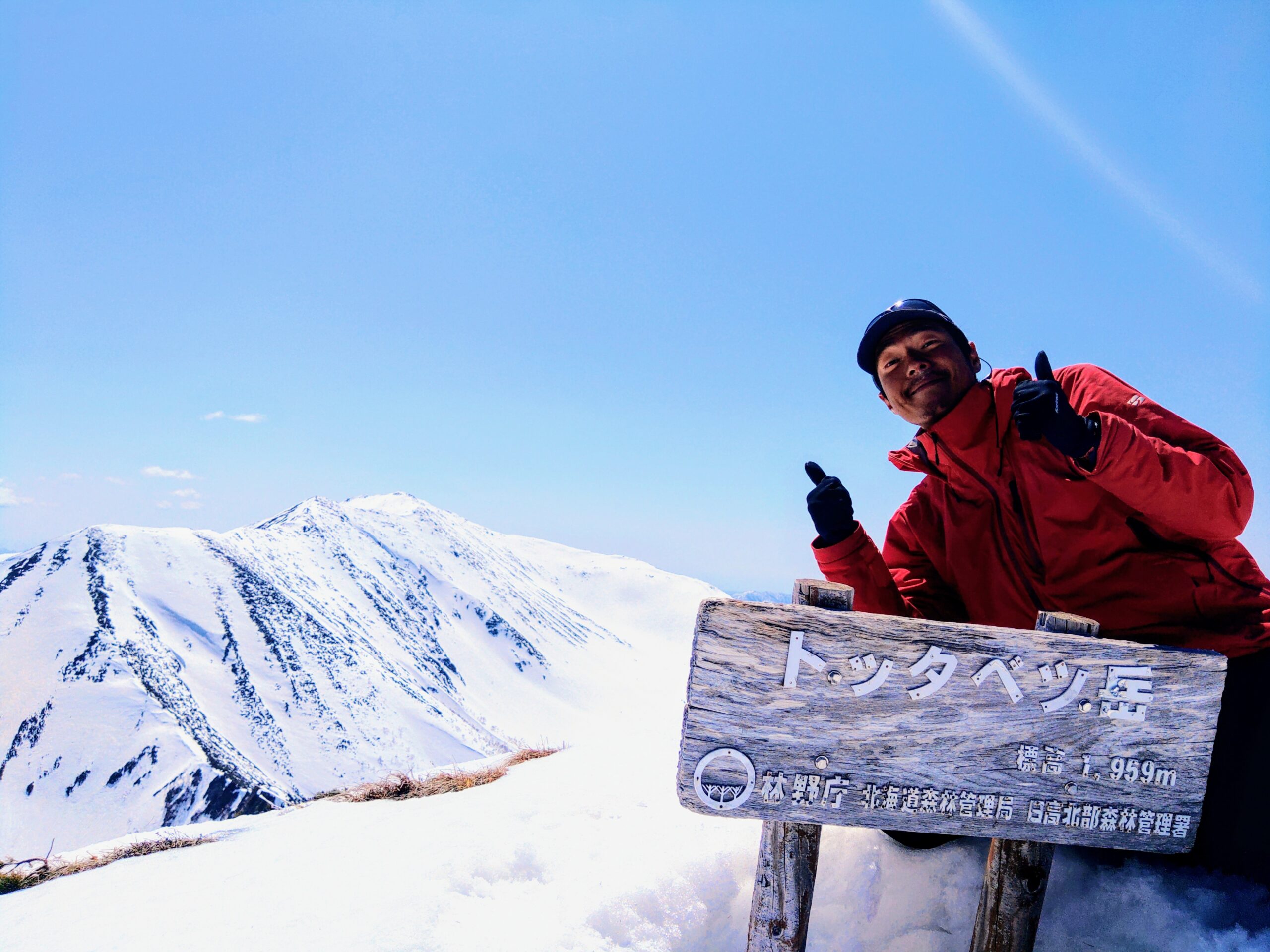To see the unseen sceneries
University News | May 15, 2024
This article was published in the Autumn 2023 issue of Litterae Populi. The full issue can be found here.
On December 30, 2022, the person who appeared in NHK’s TV special program entitled, Traversing through the Silvery White World—670 km Long Watershed Route in Hokkaido fascinated the viewers. In February 2022, Ryouta Nomura accomplished an unprecedented challenge of continuously crossing the watershed between Cape Soya and Cape Erimo in 63 days. Nomura won the Uemura Naomi Adventure Award, which is given to people who take creative and courageous actions that pushes the limits of what is possible for humans in nature—the first time it was awarded for mountain climbing in Japan. He talked about his memories of Hokkaido University and other stories.
-
Ryouta Nomura
-
Alpinist/mountain guide
Graduated from the School of Fisheries Sciences
Ryouta Nomura was born in Osaka Prefecture in 1994. He graduated from the School of Fisheries Sciences in 2020 and became a mountain guide. He completed a solo run of the Shiretoko and Hidaka mountains without resupply in a single winter while at the University and received the 2019 Hokkaido University Elm Award. He achieved a solo run of the Hokkaido watershed (670 km between Cape Soya and Cape Erimo) in 63 days in the snowy season of 2022, becoming the first person to do so, and received the 2022 Uemura Naomi Adventure Award.
What was your childhood like?
Since I grew up in a “bed town” suburb of Osaka, I was not surrounded by nature. I was an ordinary boy playing baseball through elementary, junior high, and high school. In those days, I never imagined what I have become now.
So, the reason you entered Hokkaido University’s School of Fisheries Sciences was not “yearning for nature?”
I wanted to leave home. I chose Hokkaido University as I wanted to go as far away as possible. The only reason I chose the School of Fisheries Sciences was because I thought field work looked more interesting than studying at a desk. After I entered the University, I was surprised how much my fellow students loved and knew about the sea.
Would you tell us about your experience in the wandervogel (hiking/backpacking) club?
I wanted to start something new. As I was curious about the unfamiliar word wandervogel, I went to the club’s welcoming party for freshmen and joined because the senior students invited me. After joining the club, I neglected my studies and was always thinking about the mountains.
An unforgettable memory is that some fourth-year students suffered from hypothermia while climbing a mountain in spring when I was in my second year. Although all of us managed to get down the mountain, it got me thinking about climbing in the future.
When you are in the mountains, you are solely responsible to determine how far you can safely go. You have to draw a line before it really becomes dangerous, but if you draw the line too early, you won’t be able to achieve what you came to do. The skill to determine where you draw the line may determine how good a climber you are.
I hear you took a leave from the University for two years but remained in the wandervogel club.
I ran into one of my former senior students who had become a mountain guide when I climbed a mountain in the summer of my second year, and I came to love helping him with the tours he organized. At that time, I set the goal of becoming a mountain guide in the future for myself. I thought about what I should do to achieve the goal and decided to take a leave of absence to acquire the experience and skill to climb mountains myself.
How did it come that you planned to traverse the watershed after graduating from the School of Fisheries Sciences?
It’s rare for anyone to become a guide immediately without being employed as one, and I think most people in the same position cannot easily find a job as a guide. With the outbreak of COVID-19 that coincided with my graduation, I found myself without any plans.
Two books I read during the COVID-19 pandemic, Walking on the Northern Watershed by Eiichi Kudo and Endless Mountain Ridge by Tetsuya Shimizu, formed the basis for my plan to traverse through the watershed. In his book Kudo says it is a difficult task for a person to walk through by himself and “I want someone with inner strength and a strong body to withstand such extraordinary hardships to attempt and realize this one day. (snip) I have my hope on young future mountaineers (Eiichi Kudo, Walking on the Northern Watershed, Yama-kei Publishers Co., Ltd., 1994, p. 214).” I thought I would become one of these young mountaineers. I wanted to gain confidence for living as a mountain guide by making a plan that is grand enough to make you believe you can do anything if you can complete it, and then actually achieve it.
Could you tell us about traversing the watershed?
My first attempt in 2021 ended in failure because I made an inappropriate plan without understanding the entire scale. My tent broke when I felt rushed by a delay in my plan and misjudged the weather. I headed back thinking I could not proceed while making such a misjudgment. You can’t climb a mountain safely until you can make objective decisions without your private emotions interfering.
I then made another attempt with a new plan in February 2022. When I’m on the mountain, all I can do is to think about the day ahead of me. As the sun rises at 4 or 5 o’clock in the morning, I get up and start walking at 2 or 3 o’clock. It’s easy to walk at first, but snow becomes slushy after sunrise, making it difficult to walk. Every day, I get to my destination thinking, “What am I doing? I want to go home.” I put up a tent, have a warm drink, eat biscuits, and feel a little happy. Then I check the map, eat dinner and go to sleep at sunset day after day. Sometimes when the weather was bad, I would spend a whole day in the tent. Then I realized that it had been a week, a month, or even two months. Although I experienced the problem that food I had kept at a resupply point was eaten by rats, I managed to complete the full distance with the help of my friends who got me food from the foot of the mountain.
After completing the course, did you have any change of heart?
I don’t feel that I accomplished something great as I only barely managed to do what I thought I might be able to do. To be honest, strangers began to talk to me, the media covered me, and the responses of people around me changed only after I received the Uemura Naomi Adventure Award. I have no desire to be valued by people around me. I’m just a person who did and pursued what I wanted to do.
My next plan is still just a dream. It’s a secret because it is not yet at the stage to be talked about (laugh). I don’t think there will be a second traverse plan.
Lastly, could you give a message to students at Hokkaido University?
I’ve just done what I wanted to do. I first wish for them to find what they really want to do. I gave up getting employment or having a stable career to pursue mountain climbing. Such paths are actually quite common. I want many juniors to know that there are lots of choices, and independent of the path they eventually choose, there are many interesting directions they can follow.
This article was published in the Autumn 2023 issue of Litterae Populi. The full issue can be found here.




